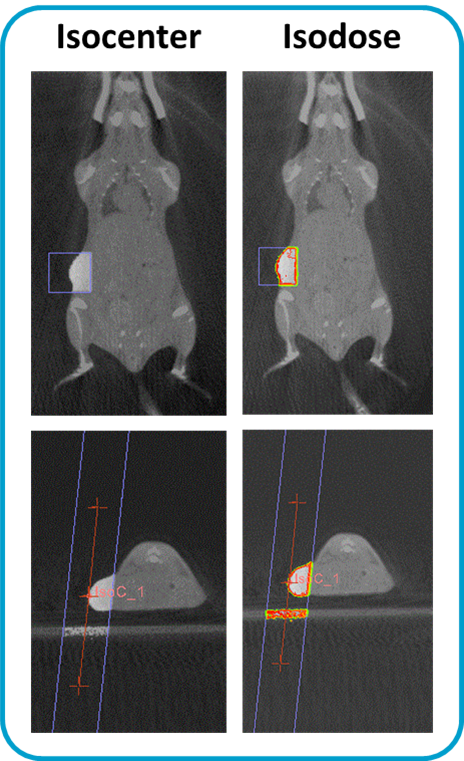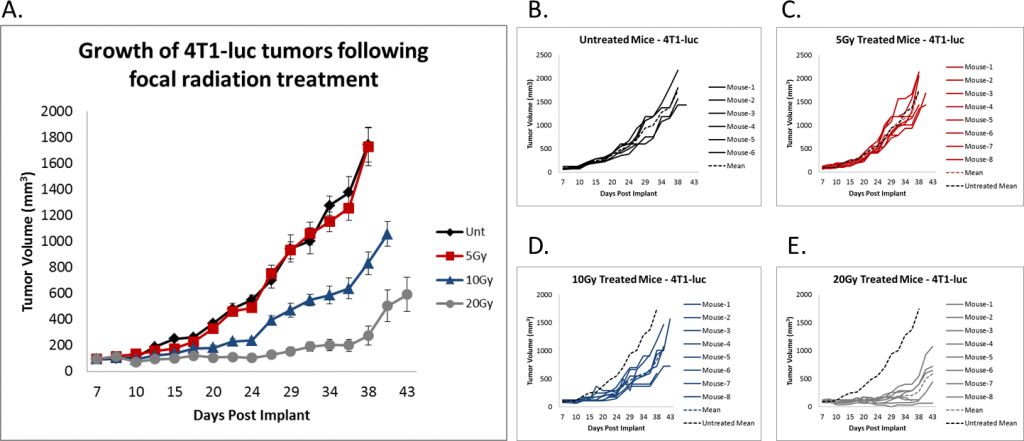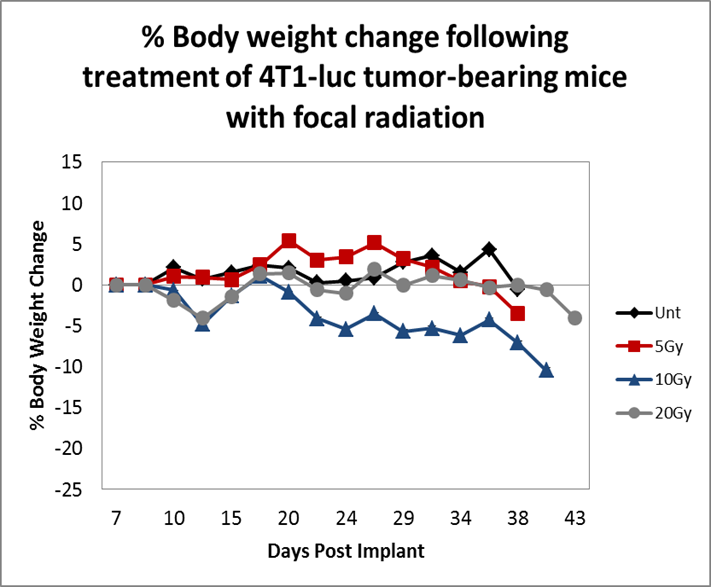Author: Chris Bull, Senior Scientific Advisor, Imaging
Date: August 2017
The use of immuno-oncology therapies have seen remarkable progress in the last five years and are currently undergoing clinical trial use in combination with a variety of agents including radiation therapy (RT).1 RT is a main-stay in clinical oncology treatments with approximately 60 percent of cancer patients receiving RT at some point during their care. The clinical prevalence of RT underpins the need for effective testing of radiation combinations in the preclinical setting. In order to do this, baseline sensitivity of mouse tumor models to radiation is required.
One of the most commonly utilized syngeneic mouse models of mammary cancer is 4T1. We have characterized our 4T1-luc2 model to support studies with novel immuno-oncology agents. We have previously reported on the extensive immune profiling of 4T1-luc2 tumors along with the lack of robust anti-tumor activity following anti-CTLA-4 treatment (4T1-Luc2: An Orthotopic Mammary Cancer Model To Support Novel Immuno-Oncology Drug Discovery). In this month’s Model Spotlight we highlight the dose responsiveness of 4T1-luc2 tumors to focal beam radiation treatment.
We utilize the Small Animal Radiation Research Platform (SARRP) from Xstrahl to allow for precise radiation delivery to an exact anatomic target (Figure 1).

Figure 1: Following placement onto the treatment bed, a CBCT is performed for treatment planning. The resultant CT is loaded into the treatment planning software and a treatment plan is optimized for each animal. This example shows the isocenter and isodose for a mouse with a subcutaneous tumor.
In this work, mice were implanted in the lower mammary fat pad with 4T1-luc2 tumor cells and radiation treatment performed on day 7 utilizing the SARRP instrument. We found that a single dose of focal radiation with 5Gy did not result in any anti-tumor effects whereas both 10 and 20Gy resulted in a dose dependent reduction of tumor volume over time (Figure 2). At 10Gy we found an approximate 10 day growth delay compared to the untreated group while 20Gy resulted in just over 15 days growth delay. However, neither dose resulted in any tumor free survivors.
Dose Response Following Focal Radiation of 4T1-luc2 Tumors

Figure 2: Tumor cells were implanted into the mammary fat pad of female Balb/C mice. At a mean tumor volume of ~100-150mm3 mice were untreated or treated with a single dose of 5, 10 or 20Gy as indicated on day 7. A, group mean tumor volumes over time. B, individual tumor volumes for untreated control mice over time. C, individual tumor volumes for 5Gy treated mice over time. D, individual tumor volumes for 10Gy treated mice over time. E, individual tumor volumes for 20Gy treated mice over time. In B-E the black dashed line indicates mean tumor volume of untreated group over time. In C-E, the colored dashed line is the mean tumor volume of the indicated group.
Body weight loss was only observed in mice that exhibited advanced disease associated with lung and/or thoracic area metastasis that the model is known to produce. In Figure 3, percent change in body weights over time showed toleration of all three doses of radiation during the course of the study. In order to best utilize this model for radiation combination studies, we recommend using the moderately active 10Gy dose which allows for an ample therapeutic window to combine with novel therapies.

The combination of precision radiation delivery and Labcorp's expertise in immuno-oncology allows for the execution of complex and powerful study designs.
Contact us and speak with one of our scientists to find out how our 4T1-luc2 or other syngeneic models can be used with our targeted radiation therapy technology and techniques.
References
Connect
Let's start a conversation
Contact Us